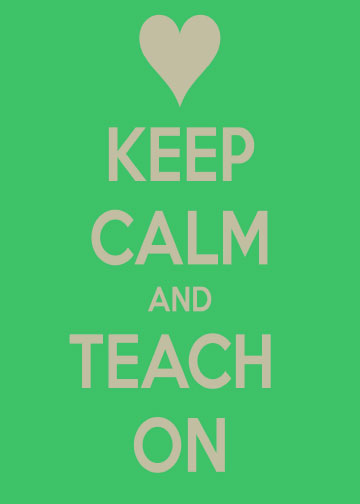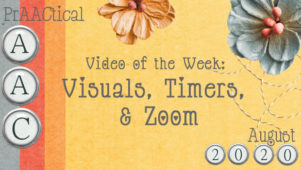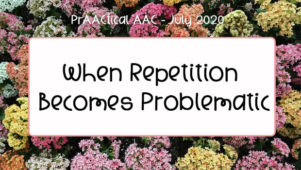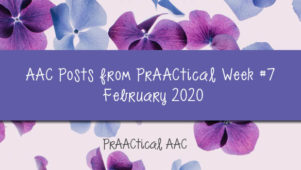AAC ‘Must Haves’ for the Classroom and Speech Room

As we were getting ready for back to school and thinking about ‘must haves’, it quickly became apparent that it is not so easy to narrow it down. And the ‘must haves’ would definitely vary depending upon type of class, students, and even school. Based on a wide variety of differences, we organized a wide variety of choices to explore (we apologize in advance if we got carried away but…). Choose what you need, bookmark what you may need later and let us know your ‘must haves’ for a classroom and speech room AAC collaborative approach. We will create an ongoing list.
 Get Started Before School Starts
Get Started Before School Starts 
- Do these 10 Things to Get Started with AAC if you are new to an AAC student or classroom
- Provide AAC Support in the Classroom. Support teachers and educators with tips from Jane Farrall, & learn about AAC in the Classroom by Joan Bruno
- 5 Skills for New AAC Facilitators to Know
- Be an AAC Myth buster!
 Prepare Visual Supports for Expression, Understanding and Organizing
Prepare Visual Supports for Expression, Understanding and Organizing
- Visual Supports for Places We Go- Print out and laminate a ‘school places’ key chain.
- Write a social narrative for your class that projects your positive goals for the school year.
- Tar Heel Reader Books– Look for, choose, and save links or print out Tar Heel Reader Books that are relevant to your students and class. Check out books from a ‘back to school’ search to get started.
- Set up and prepare a Visual Schedule System– learn the ‘Power’ of the Visual Planner, don’t forget to consider daily, mini, and monthly schedules. Also, remember, teaching ‘change of schedule’ is important.
- Prepare some Communication Flip Books or Core Word Boards to provide Aided Language Input- ALI or to provide a beginning communication book to a student who enters the classroom without the appropriate AAC displays . Assessment and individualized communication displays will be necessary but ‘something is better than nothing’.
- Think about and print out visual supports for behavior but remember that visual supports can be used for way more than behavior.
- Join Boardmaker Achieve Community (formally Boardmaker Share) if you have access to board maker software and search for communication boards, books, stories that are relevant to your students and class.
 Project an AAC Attitude!
Project an AAC Attitude!
- It’s All About Us!
- Cultivating an “I Can” Mindset with Marlene Cummings
- Building Acceptance for AAC
- Use The Least Dangerous Assumption & , Presume Competence
 Check Out Specific AAC Resources & Materials
Check Out Specific AAC Resources & Materials
- Look at PrAActical AAC’s e-toolbox downloads
- 5 AAC & Related Assessment Forms
- 5 Tips to Make AAC Assessments Run Smoothly
- AAC Goal Round-up– many resources listing AAC goals
- 10 Resources for Planning & Designing Communication Books
- 5+ Ways to Make Page Fluffers and Spacers
- 5 Apps for Creating Communication Boards
- Visual Supports from Hamilton Boone Madison Special Services Cooperative
- From Special Education Technology-British Columbia: PictureSet
- ConnectAbility’s Visual Engine
- Picto4Me: An app for your computer that you can install to Chrome
- Free software with symbols for making visual supports: QuickPics Symbols fromPatrick Ecker
- Behavioral supports from eLearning Visuals
- Wonderful activities to support language and literacy from Dr. Caroline Musselwhite
- Literacy Resources– a roundup of great literacy resources
- 5 Resources for Social Narratives– round-up of social narrative resources
- 5 Safety Resources for People Who Use AAC
- 133 Free or Lite Versions of AAC Apps
- 5 Ways to Use Powerpoint in AAC Intervention
- Resources for Supporting AAC in the Classroom by Lauren Enders
- Visual Cooking Resources– Awesome recipes, lesson plans, and cooking made visual
- Vocabulary Resources
- Print out great visual support for teaching comprehension and expression of ‘wh’ questions by Lisa Geary, free at Teachers Pay Teachers.
 Develop a Personal Learning Network/Continued Knowledge
Develop a Personal Learning Network/Continued Knowledge
- Develop Your PrAACtical AAC Learning Network
- Checkout and follow Awesome Blogs
- Checkout PrAACtical AAC’s e-toolbox
- Follow PrAACtical AAC
- Learn the Research Supporting AAC, Research Support for AAC & People with Autism
Please let us know YOUR ‘must haves’ for a classroom and speech room AAC collaborative approach.
Filed under: Strategy of the Month
Tagged With: visual supports
This post was written by Robin Parker







2 Comments
Hi Robin;
Your site has been a great resource for me. I especially enjoyed the blog with Jane Farrall. I am beginning a therapy program with a 23 month old girl with Rett Syndrome. I am needing as much help and extra tips as possible in order to initiate a successful program for her and her family. We have initiated the use of a jelly-bean switch which supports her interest in audible + moving toys. I am looking to begin teaching yes / no responses next but would be welcome to any suggestions you have. Sincerely, Carmen
Hi. Thanks for writing. Take a look at these 2 posts by Rett Syndrome experts for more information: Understanding Rett Syndrome with Sally Ann Garrett- http://praacticalaac.org/praactical/understanding-rett-syndrome-by-sally-ann-garrett/ and AAC for Children who Have Rett Syndrome with Dr. Theresa Bartolotta- http://praacticalaac.org/praactical/fresh-look-aac-for-children-who-have-rett-syndrome-with-dr-theresa-bartalotta/